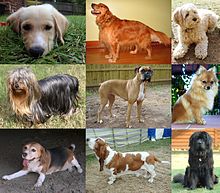ᱥᱮᱛᱟ
ᱟᱹᱥᱩᱞ ᱡᱟᱱᱣᱟᱨ
ᱥᱮᱛᱟ (Carnivore) ᱫᱚ ᱡᱤᱞ ᱡᱚᱡᱚᱢᱤᱡ ᱟᱨ ᱛᱚᱣᱟ ᱧᱩᱧᱩᱤᱡ ᱡᱤᱵ ᱠᱟᱱᱟᱠᱩ ᱾ ᱚᱫᱚ ᱱᱮᱛᱟᱨ ᱫᱚ ᱟᱹᱥᱩᱞ ᱡᱤᱵ ᱦᱤᱥᱟᱹᱵ ᱛᱮᱜᱮ ᱠᱚ ᱞᱮᱠᱷᱟᱜ-ᱟ ᱾ ᱑᱕ ᱥᱟᱥᱟᱭ ᱥᱮᱨᱢᱟ ᱞᱟᱦᱟᱨᱮ ᱵᱤᱨ ᱦᱚᱲᱠᱩ ᱡᱚᱠᱷᱚᱱ ᱥᱮᱸᱫᱽᱨᱟᱠᱩ ᱪᱟᱞᱟᱜ ᱠᱟᱱ ᱛᱟᱸᱦᱮᱸᱱᱟ ᱩᱱ ᱡᱚᱠᱷᱚᱡ ᱩᱱᱠᱩ ᱥᱟᱶᱛᱮ ᱵᱤᱨ ᱥᱮᱛᱟ ᱦᱚᱸᱠᱚ ᱦᱚᱸ ᱥᱮᱞᱮᱫᱚᱜ ᱠᱟᱱ ᱛᱟᱸᱦᱮᱸᱱᱟ ᱾ ᱚᱝᱠᱟ ᱟᱝᱠᱟ ᱛᱮᱜᱮ ᱥᱮᱛᱟ ᱫᱚ ᱦᱚᱲ ᱥᱟᱶᱛᱮᱠᱩ ᱜᱟᱛᱮᱭ ᱱᱟ ᱟᱨ ᱦᱚᱲᱨᱮᱱ ᱟᱹᱥᱩᱞ ᱡᱤᱵ ᱦᱤᱥᱟᱹᱵᱛᱮᱜᱮᱠᱩ ᱞᱮᱠᱷᱚᱭᱱᱟ ᱾ ᱛᱚᱵᱮ ᱟᱨᱦᱚᱸ ᱮᱴᱟᱜᱠᱩᱠᱩ ᱢᱮᱱᱟ ᱵᱟᱝᱢᱟ ᱢᱤᱫ ᱜᱮᱥᱟᱥᱟᱭ ᱥᱮᱨᱢᱟ ᱞᱟᱦᱟᱨᱮ ᱥᱮᱛᱟ ᱫᱚ ᱦᱚᱲᱨᱮᱱ ᱟᱹᱥᱩᱞ ᱡᱤᱵᱠᱩ ᱦᱩᱭᱠᱟᱱᱟ᱾[᱑] ᱟᱨᱦᱚᱸ ᱠᱤᱪᱷᱩ ᱦᱚᱲ ᱫᱚᱠᱩ ᱢᱮᱱᱟ ᱵᱟᱝᱢᱟ ᱠᱤᱪᱷᱩ ᱥᱮᱨᱢᱟ ᱞᱟᱦᱟᱨᱮᱜᱮ ᱥᱮᱛᱟ ᱫᱚ ᱦᱚᱲᱨᱮᱱ ᱟᱹᱥᱩᱞ ᱡᱤᱵᱠᱩ ᱦᱩᱭ ᱟᱠᱟᱱᱟ᱾[᱒][᱓]

ᱛᱩᱭᱩ ᱟᱨ ᱥᱮᱛᱟᱣᱟᱜ ᱥᱟᱹᱜᱟ.ᱭ ᱫᱚ ᱥᱩᱨ ᱜᱮᱭᱟ ᱾ ᱛᱚᱵᱮ ᱡᱚᱵᱮ ᱠᱷᱚᱱ ᱥᱮᱛᱟ ᱟᱹᱥᱩᱞ ᱡᱤᱵᱠᱩ ᱦᱩᱭᱠᱟᱱᱟ ᱩᱱᱠᱷᱚᱡ ᱥᱮᱛᱟᱣᱟᱜ ᱟᱭᱢᱟ ᱞᱮᱠᱟᱱ ᱡᱟᱹᱛ ᱛᱮᱭᱟᱨ ᱟᱠᱟᱱᱟ ᱾ ᱩᱥᱩᱞ, ᱠᱷᱟᱴᱚ, ᱡᱤᱞᱤᱧ, ᱟᱭᱢᱟ ᱞᱮᱠᱟᱱ ᱟᱨᱦᱚᱸ ᱱᱟᱱᱟ ᱦᱩᱱᱟᱹᱨ ᱨᱚᱝ ᱨᱮᱱ ᱥᱮᱛᱟ ᱢᱮᱱᱟᱜ ᱠᱩᱣᱟ ᱾
ᱵᱟᱨᱦᱮ ᱡᱚᱱᱚᱲ
ᱥᱟᱯᱲᱟᱣ- Biodiversity Heritage Library bibliography for Canis lupus familiaris
- Fédération Cynologique Internationale (FCI) – World Canine Organisation
- Dogs in the Ancient World, an article on the history of dogs
- View the dog genome Archived ᱒᱐᱑᱓-᱑᱒-᱑᱓ at the Wayback Machine. on Ensembl
ᱯᱷᱮᱰᱟᱛ ᱦᱚᱨ
ᱥᱟᱯᱲᱟᱣ- ↑ http://news.bbc.co.uk/2/hi/science/nature/2498669.stm
- ↑ Vilà, C. et al. (1997). Other research suggests that dogs have only been domesticated for a much shorter amount of time. Multiple and ancient origins of the domestic dog. Archived ᱒᱐᱑᱒-᱐᱑-᱒᱖ at the Wayback Machine. Science 276:1687–1689. (Also "Multiple and Ancient Origins of the Domestic Dog" Archived ᱒᱐᱐᱗-᱐᱙-᱒᱖ at the Wayback Machine.)
- ↑ Lindblad-Toh, K, et al. (2005) Genome sequence, comparative analysis and haplotype structure of the domestic dog. Nature 438, 803–819.